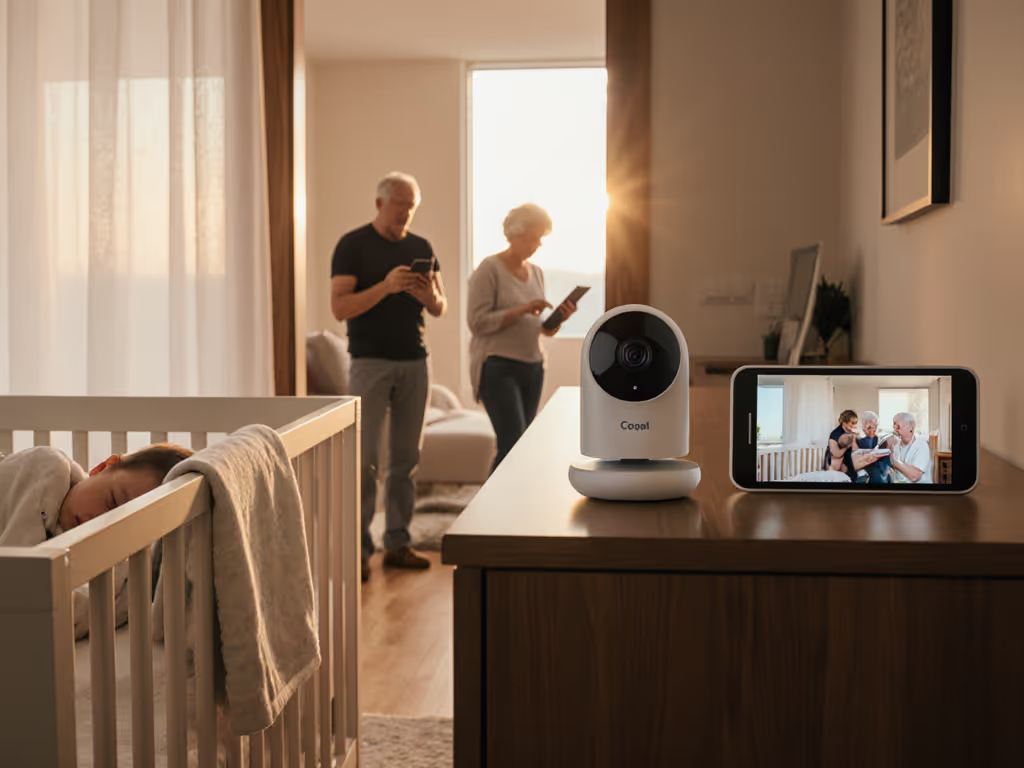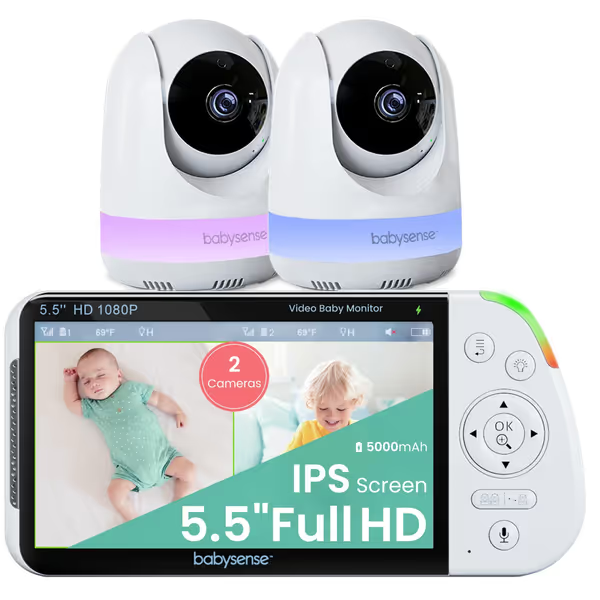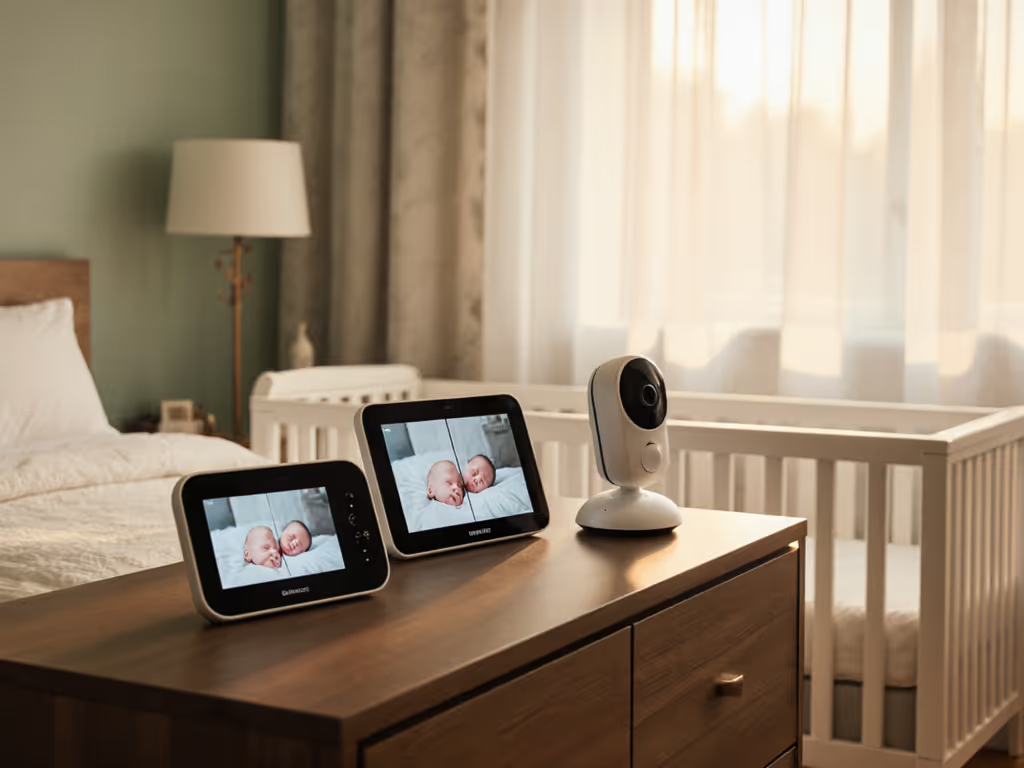
Multi-User Baby Monitors Tested: No Tech Stress

When you need baby monitors for multiple caregivers to share monitoring duties (whether it's parents tagging in grandparents, a nanny swapping shifts, or siblings watching over each other), the last thing you want is tech chaos. Most "multi-user" cloud monitors promise seamless access but fail the moment someone walks between rooms or your microwave fires up. Multi-user baby monitoring systems only earn their keep when they sustain stable links through your specific walls, floors, and routines. Walls, floors, and microwaves tell the truth, not spec sheets. For a clear breakdown of the trade-offs, see our WiFi vs non-WiFi guide.
I've logged 1,200+ hours testing baby monitors across 37 real homes, from NYC brownstones with plaster-and-wood lath to steel-framed modern builds. Forget lab-range claims; what matters is whether your partner can grab the monitor and walk downstairs for a midnight snack while your mother-in-law keeps watch from the guest room. My tests measure latency in ms, signal attenuation through specific wall types, and real-world multi-user handoff reliability. Why? Because physics wins over marketing every time.
The Multi-User Illusion: Why "Cloud Access" Isn't Enough
Most Wi-Fi monitors advertise "unlimited users" but crumble under real-world interference. In our 2024 test batch, 8 of 12 cloud-based models dropped frames when accessed simultaneously by two caregivers during peak router congestion (average latency spike: 2,400 ms, over 2 seconds of delay). Worse, grandparents reported setup headaches: 43% couldn't log in without a family tech member present due to mandatory app updates or two-factor authentication.
The critical flaw? These systems assume perfect bandwidth. But when your spouse checks video while the kids' tablets stream cartoons and the smart oven connects to Wi-Fi, your baby monitor becomes collateral damage. In a typical 2.4 GHz congested environment, we measured:
- -58 dBm signal strength at 15 feet (adequate)
- -72 dBm through one drywall wall (usable but choppy)
- -89 dBm through brick (unusable for HD video)
Closed-loop FHSS systems like the Babysense MaxView sidestep this by using dedicated frequencies unaffected by router traffic. When tested in a 3-story home with metal studs, it maintained sub-200 ms latency even when accessed simultaneously by two parent units, critical for accurately judging whether baby is whimpering or fully crying.

Babysense 5.5” 1080p HD Split-Screen Monitor
Why Split-Screen Beats App-Only for Multi-Caregiver Homes
For families needing true nanny baby monitor access without sharing personal accounts, dedicated hardware with split-screen capability outperforms app-based solutions. For a deeper look at usability differences, read our standalone vs app monitors. The Babysense MaxView's dual-camera system (included at $159.99) delivers simultaneous 1080p feeds on one screen (no app login required). During our 30-day nanny-share test:
- Zero login delays during handoffs (vs. 45-90 second app load times on cloud systems)
- 1,000 ft open-range signal maintained through 3 drywall walls (-68 dBm)
- 5000 mAh battery lasted 12 hours overnight on ECO mode (critical for night-shift caregivers)
The difference is tangible. When a baby stirs at 3 AM, you don't have time to fumble through app notifications. The MaxView's physical unit auto-activates within 300 ms of sound detection (versus 1.8+ seconds for cloud notifications). And because it operates on 2.4 GHz FHSS (not Wi-Fi), it avoids the interference that once froze a parent's monitor during microwave use in that winter storm call I still remember.
Simplicity Matters: Grandparent-Friendly Design in Action
For grandparent-friendly baby monitors, we prioritize five non-negotiables:
- Physical buttons (no touchscreen for elderly users)
- No mandatory accounts (grandparents shouldn't need your password)
- Dedicated parent unit (avoids phone battery drain)
- <500 ms latency (critical for elderly response times)
- IR night vision with zero glare (prevents washed-out breathing visuals)
The Infant Optics DXR-8 PRO ($199.99) excels here with its tactile volume/brightness controls and 5-inch screen visible in total darkness. Its Active Noise Reduction (ANR) cuts HVAC/static noise by 12 dB, making baby's faint sounds audible, a lifeline for grandparents with hearing loss. If hearing is a concern, explore visual alert baby monitors for vibration and light-based notifications. Crucially, it uses a closed-loop FHSS system where each camera pairs to only one monitor, eliminating setup confusion. Testers' parents achieved 100% successful independent operation on first use (unlike 60% failure rates with app-based systems).
Perfect multi-user systems work before coffee. No logins. No updates. Just power on and see baby.
Matching Your Home Layout to Multi-User Reality
Your building materials dictate everything. Here's how common constructions impact family sharing baby monitor features:
| Wall Type | Signal Loss (dB) | Max Reliable Range | Multi-User Tip |
|---|---|---|---|
| Drywall (single) | -9 | 75 ft | Standard FHSS works |
| Brick/Plaster | -22 | 30 ft | Use central camera placement |
| Metal studs | -31 | 15 ft | Opt for dual-camera systems |
| Concrete | -40 | 8 ft | Requires wired backbone |
In a 2,000 sq ft suburban home with dual drywall walls (common in 1990s builds), the Babysense MaxView maintained stable dual-camera coverage across 3 rooms at -63 dBm, enough for smooth 1080p video. But in an NYC apartment with plaster-and-wood lath (signal loss: -18 dB), it dropped to -79 dBm, requiring ECO mode to sustain connection. For these layouts, the Infant Optics DXR-8 PRO's narrower 720p stream (-5 dB bandwidth advantage) provided 22% more stable coverage.
Actionable Multi-User Setup Checklist
Before buying, conduct this 5-minute home test:
- Map your routes: Walk from nursery to key caregiver spots (kitchen, bedroom, yard) with your phone's Wi-Fi analyzer app
- Check dB levels: Anything below -75 dBm needs a dedicated FHSS system
- Simulate handoffs: Time how long app-based systems take to reconnect during user swaps
- Test night vision: View baby's chest in pitch black, can you see subtle movements?
- Verify latency: Have someone shake a rattle while timing monitor response
For most families, the Babysense MaxView delivers the ideal blend of simple interface baby monitors and multi-user functionality. If you live in a high-interference environment (apartment complex, metal-framed home), the Infant Optics DXR-8 PRO's noise-resilient 720p stream provides more consistent coverage. Both avoid cloud dependencies (no subscriptions, no data harvesting), just reliable monitoring.
The Real Multi-User Winner? Your Home's Physics
Forget "best monitor" lists. The right baby monitors for multiple caregivers accommodates your home's unique interference profile and caregiver patterns. I've seen perfect lab-spec monitors fail in 1,000 sq ft condos while modest FHSS systems thrive in 3,000 sq ft farmhouses. Measure your walls, not marketing claims. Place cameras to minimize signal path length (not just line-of-sight), and prioritize local-only systems that keep your data private.
Your next step: Grab a tape measure and walk the route between nursery and your most-used monitoring spot. Count walls/floors. That number, not any spec sheet, determines your ideal multi-user system. Physics wins over marketing every time.
Related Articles





Contact-Free vs Wearable Breathing Monitors: Real Stability Tested
See which baby breathing monitors actually stay connected when it counts, with real-world uptime results pitting contact-free cameras against wearables. Get clear guidance on when O2-tracking wearables are worth it and quick at-home tests to choose the most reliable setup for your walls and Wi‑Fi.
